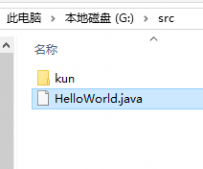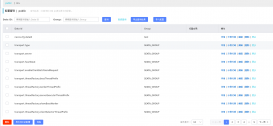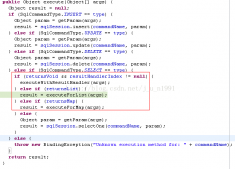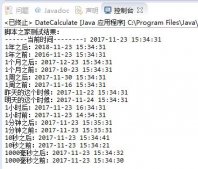@ApiImplicitParam
作用在方法上,表示单独的请求参数
参数
-
name:参数名。 -
value:参数的具体意义,作用。 -
required:参数是否必填。 -
dataType:参数的数据类型。 -
paramType:查询参数类型,这里有几种形式:
类型 作用
-
path以地址的形式提交数据 -
query直接跟参数完成自动映射赋值 -
body以流的形式提交 仅支持POST -
header参数在request headers 里边提交 -
form以form表单的形式提交 仅支持POST
在这里我被坑过一次:当我发POST请求的时候,当时接受的整个参数,不论我用body还是query,后台都会报Body Missing错误。
这个参数和SpringMvc中的@RequestBody冲突,索性我就去掉了paramType,对接口测试并没有影响。
@ApiImplicitParams
用于方法,包含多个 @ApiImplicitParam:
例:
|
1
2
3
4
5
6
7
8
|
@ApiOperation("查询测试")@GetMapping("select")//@ApiImplicitParam(name="name",value="用户名",dataType="String", paramType = "query")@ApiImplicitParams({@ApiImplicitParam(name="name",value="用户名",dataType="string", paramType = "query",example="xingguo"),@ApiImplicitParam(name="id",value="用户id",dataType="long", paramType = "query")})public void select(){} |
paramType 示例详解
path
|
1
2
|
@RequestMapping(value = "/findById1/{id}", method = RequestMethod.GET, produces = MediaType.APPLICATION_JSON_UTF8_VALUE)@PathVariable(name = "id") Long id |
body
|
1
2
3
|
@ApiImplicitParams({ @ApiImplicitParam(paramType = "body", dataType = "MessageParam", name = "param", value = "信息参数", required = true) })@RequestMapping(value = "/findById3", method = RequestMethod.POST, produces = MediaType.APPLICATION_JSON_UTF8_VALUE, consumes = MediaType.APPLICATION_JSON_VALUE)@RequestBody MessageParam param |
提交的参数是这个对象的一个json,然后会自动解析到对应的字段上去,也可以通过流的形式接收当前的请求数据,但是这个和上面的接收方式仅能使用一个(用@RequestBody之后流就会关闭了)
header
|
1
2
3
4
5
|
@ApiImplicitParams({ @ApiImplicitParam(paramType = "header", dataType = "Long", name = "id", value = "信息id", required = true) })String idstr = request.getHeader("id");if (StringUtils.isNumeric(idstr)) {id = Long.parseLong(idstr);} |
Form
|
1
2
|
@ApiImplicitParams({ @ApiImplicitParam(paramType = "form", dataType = "Long", name = "id", value = "信息id", required = true) })@RequestMapping(value = "/findById5", method = RequestMethod.POST, produces = MediaType.APPLICATION_JSON_UTF8_VALUE, consumes = MediaType.APPLICATION_FORM_URLENCODED_VALUE) |
小结一下
(1)对于@ApiImplicitParam的paramType:query、form域中的值需要使用@RequestParam获取, header域中的值需要使用@RequestHeader来获取,path域中的值需要使用@PathVariable来获取,body域中的值使用@RequestBody来获取,否则可能出错;而且如果paramType是body,name就不能是body,否则有问题,与官方文档中的“If paramType is "body", the name should be "body"不符。
-
@ApiImplicitParams:用在方法上包含一组参数说明 -
@ApiImplicitParam:用在@ApiImplicitParams注解中,指定一个请求参数的各个方面 -
paramType:参数放在哪个地方 -
header-->请求参数的获取:@RequestHeader -
query-->请求参数的获取:@RequestParam -
path(用于restful接口)-->请求参数的获取:@PathVariable -
body(不常用) -
form(不常用) -
name:参数名 -
dataType:参数类型 -
required:参数是否必须传 -
value:参数的意思 -
defaultValue:参数的默认值 -
@ApiResponses:用于表示一组响应 -
@ApiResponse:用在@ApiResponses中,一般用于表达一个错误的响应信息 -
code:数字,例如400 -
message:信息,例如"请求参数没填好" -
response:抛出异常的类 - 以上这些就是最常用的几个注解了。
|
1
2
3
4
5
6
7
8
9
10
11
12
13
14
15
16
17
18
19
20
21
22
23
24
25
26
27
28
29
30
31
32
|
import org.springframework.beans.factory.annotation.Autowired;import org.springframework.web.bind.annotation.RequestHeader;import org.springframework.web.bind.annotation.RequestMapping;import org.springframework.web.bind.annotation.RequestMethod;import org.springframework.web.bind.annotation.RequestParam;import org.springframework.web.bind.annotation.RestController;import io.swagger.annotations.Api;import io.swagger.annotations.ApiImplicitParam;import io.swagger.annotations.ApiImplicitParams;import io.swagger.annotations.ApiOperation;import io.swagger.annotations.ApiResponse;import io.swagger.annotations.ApiResponses;@RestController@RequestMapping("/user")@Api("userController相关api")public class UserController {@Autowiredprivate UserService userService;@ApiOperation("获取用户信息")@ApiImplicitParams({@ApiImplicitParam(paramType="header",name="username",dataType="String",required=true,value="用户的姓名",defaultValue="zhaojigang"),@ApiImplicitParam(paramType="query",name="password",dataType="String",required=true,value="用户的密码",defaultValue="wangna")})@ApiResponses({@ApiResponse(code=400,message="请求参数没填好"),@ApiResponse(code=404,message="请求路径没有或页面跳转路径不对")})@RequestMapping(value="/getUser",method=RequestMethod.GET)public User getUser(@RequestHeader("username") String username, @RequestParam("password") String password) {return userService.getUser(username,password);}} |
测试
启动服务,浏览器输入"http://localhost:8080/swagger-ui.html"
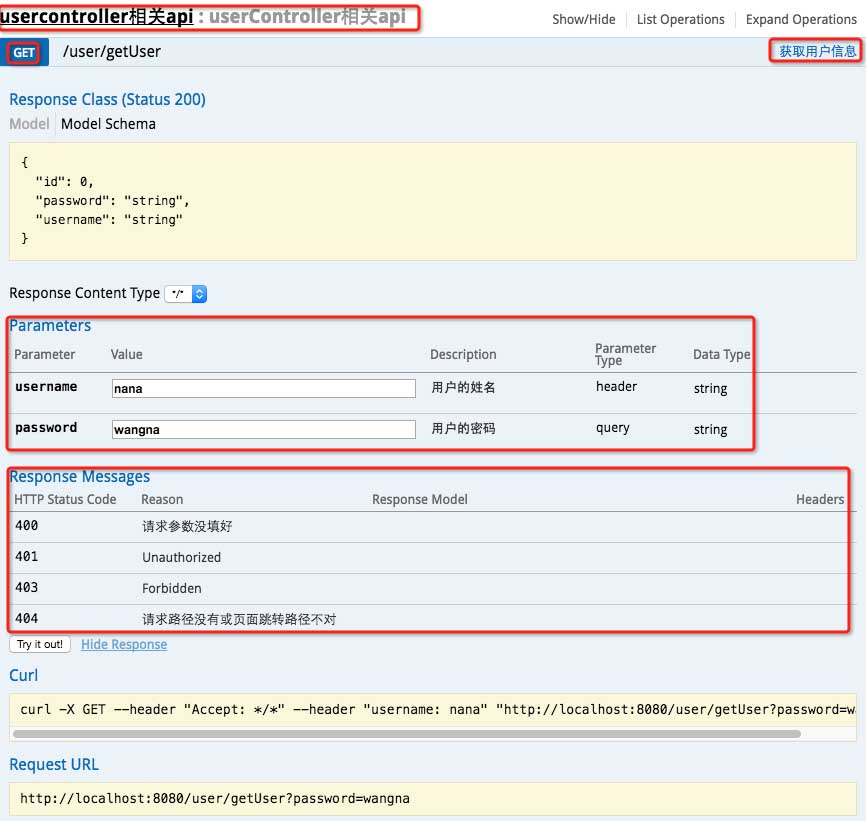
在上面案例中我们可以知道如果在request域中我们使用reques.getHeader()和使用@RequestHeader注解作用是一样的,其它内容类似。
-
@ApiResponses:用于表示一组响应 -
@ApiResponse:用在@ApiResponses中,一般用于表达一个错误的响应信息 -
code:数字,例如400 -
message:信息,例如”请求参数没填好” -
response:抛出异常的类
|
1
2
3
4
5
6
7
8
9
10
11
12
13
|
@ApiOperation("获取用户信息")@ApiImplicitParams({@ApiImplicitParam(paramType="header",name="name",dataType="String",required=true,value="用户的姓名",defaultValue="zhaojigang"),@ApiImplicitParam(paramType="query",name="pwd",dataType="String",required=true,value="用户的密码",defaultValue="wangna")})@ApiResponses({ @ApiResponse(code=400,message="请求参数没填好"),@ApiResponse(code=404,message="请求路径没有或页面跳转路径不对")})@RequestMapping(value="/getUser",method= RequestMethod.GET)public User getUser(@RequestHeader("name") String name,@RequestParam("pwd") String pwd) {System.out.println(name);System.out.println(pwd);return userRepository.getUserByNameAndPwd(name,pwd);} |
以上为个人经验,希望能给大家一个参考,也希望大家多多支持服务器之家。
原文链接:https://www.cnblogs.com/h-c-g/p/11004020.html



